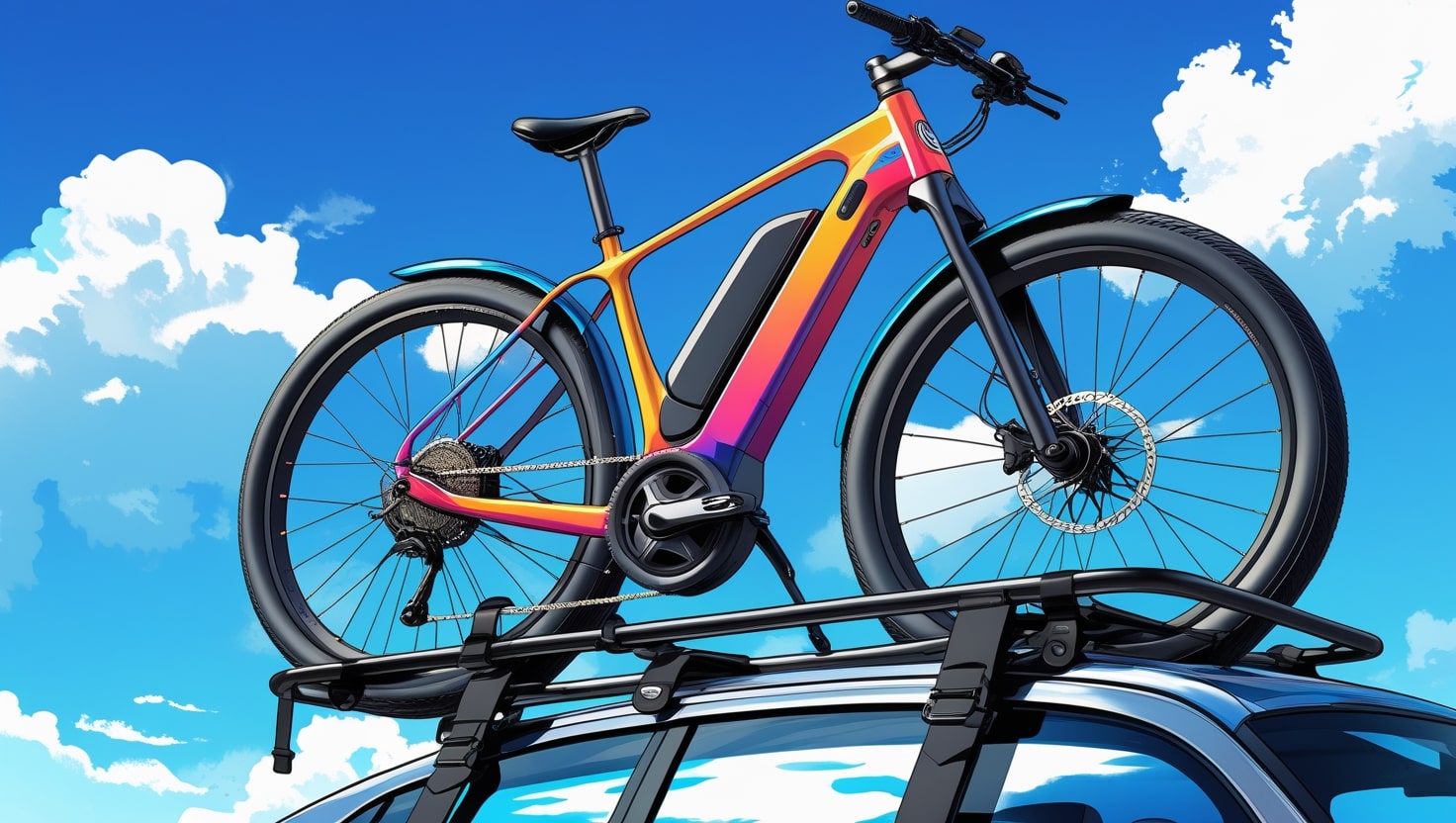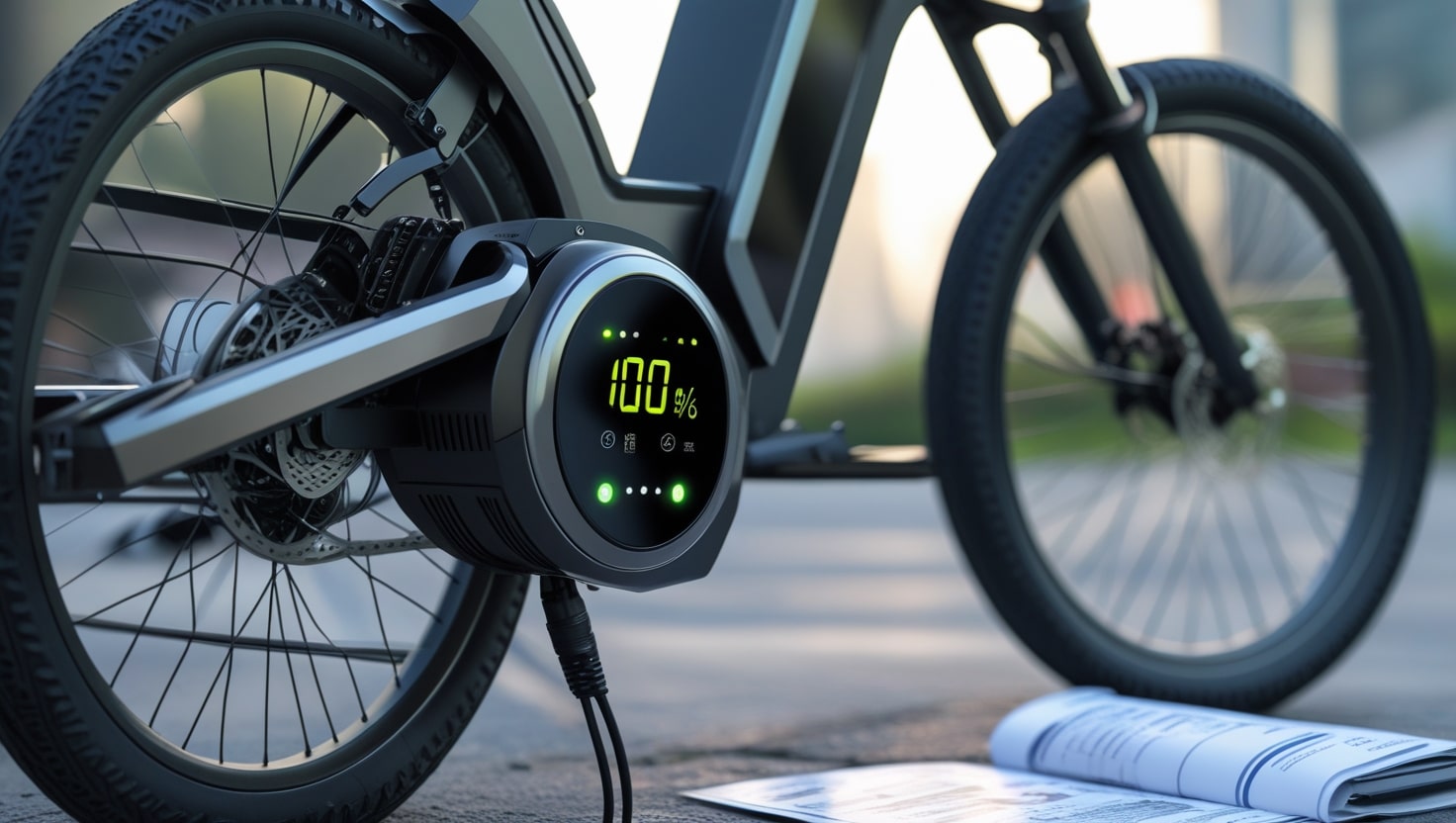When you think about transporting a motorcycle, understanding how much it weighs is crucial. For instance, if you have a trailer that’s rated for 500 pounds, knowing whether your bike weighs 450 or 550 pounds can make a significant difference. The weight of your motorcycle can affect your ability to tow, haul, or even winch it if necessary. Motorcycles come in different sizes and weights, and these factors play a big role in how you handle your bike.
Many people have a misconception that a heavy bike is difficult to handle or stand back up if it’s dropped. However, modern motorcycles are designed to be easily righted in the event of a fall. Even smaller motorcycles, which are generally easier to manage, can sometimes be tricky, but they too are built with this in mind. Whether you are considering the weight for transport or just curious about the factors that affect your motorcycle’s weight, it’s important to have a good overview of what you’re dealing with.
Related: How Much Do Electric Bikes Weigh?
Not All Bikes Are the Same
When discussing how much a motorcycle can weigh, it’s essential to understand that there isn’t a one-size-fits-all answer. On average, most motorcycles weigh between 300 and 500 pounds, but this is a gross generalization. The weight of a motorcycle depends on a variety of factors such as the size of the engine, the frame, and other components like the exhaust. Large batteries, heavier brakes, and steel rims instead of aluminum can also add significant weight to the bike.
The engine is the primary factor affecting a motorcycle’s weight. For example, if you’re at a dealership looking at a cruiser in the 600-700cc range, you’ll find that these medium-sized bikes are still relatively large. A 650cc cruiser typically weighs more than 300 pounds. This fact can be seen as either good or bad. On the one hand, a heavier bike can be more challenging to get onto a trailer or load with a winch. On the other hand, heavier engines come with their benefits, including more speed, power, and better stability, especially for a bottom-heavy cruiser.
Generally, smaller, lower-powered bikes tend to weigh less, while higher-powered performance bikes tend to weigh more. Much of this difference comes down to the weight of the engine.
Related: Can You Pedal an Electric Bike?
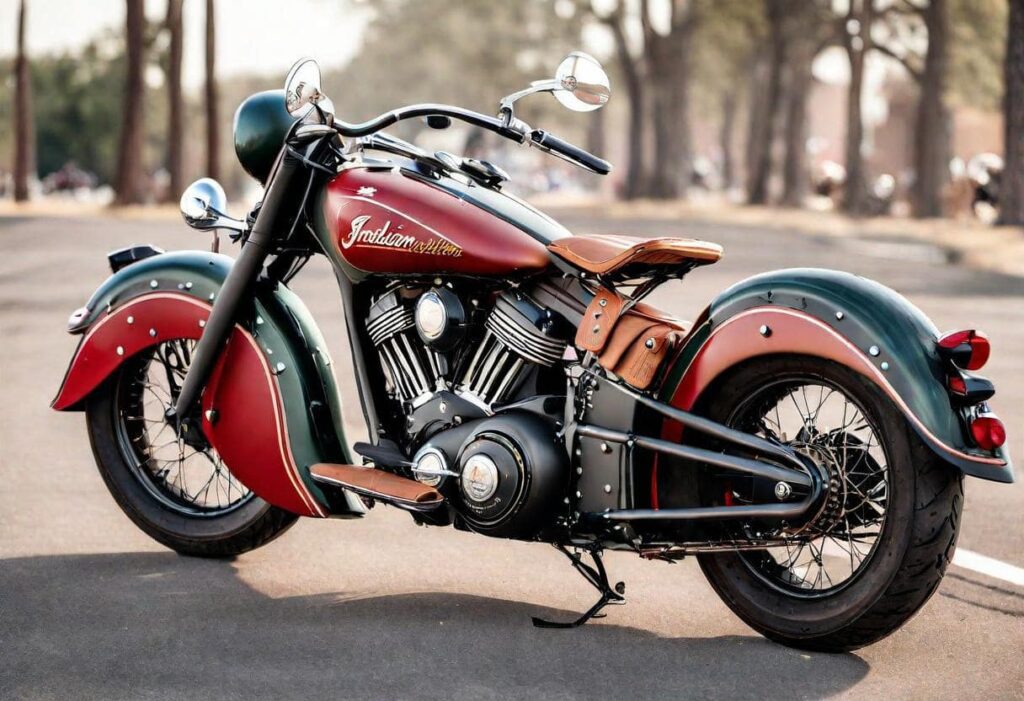
Different Motorcycle Classes
When considering how heavy a motorcycle is, it’s important to understand that different classes of bikes vary significantly in weight. A dirt bike, for instance, is much more light than a heavy-duty touring motorcycle. Different motorcycle classes are designed for specific purposes, and this is reflected in how heavy is a motorcycle. Whether you’re handling a light dirt bike or a heavy touring model, knowing the type of motorcycle is key to understanding its weight.
How Much Does a Moped Weigh?
When discussing the weight of motorcycles, it’s essential to consider the variety of types available, including mopeds. Mopeds are unique because they are both motorized and pedal-powered, designed primarily for urban environments where acceleration and a minimal footprint are key. Due to their small size and the fact that they aren’t built for highway speeds, mopeds are exceptionally light. They typically weigh between 150 and 200 pounds, making them easy to handle and simple to load into a trailer or the bed of a truck.
Cafe Racer or Scrambler
When considering the weight of a motorcycle, scrambler or cafe racer styles are often compared. These bikes are built like a tiny tank, with an average weight ranging from 400 to 500 pounds. Newer models, like Ducati’s, tend to weigh more than vintage bikes due to modern add-ons and increased power. It’s important to evaluate these factors when choosing between a classic or modern version of these bikes.
Bagger
When thinking about the weight of motorcycles, bagger bikes are among the heaviest. These bikes typically range from 700 to 850 pounds, making them some of the greatest in size and weight. The back area of these bikes often contributes to the extra pounds, providing space for additional storage and comfort features.
Related: What Goes On at Sturgis Bike Rally
Touring
When it comes to touring motorbikes, these machines are built for longer journeys where you can drive for days without getting tired. Touring bikes are among the heaviest, typically weighing between 800 and 1,000 pounds. These bikes come equipped with all the bells and whistles you might need for a comfortable ride, including panniers, flexible windscreens, and even a radio. While these features add to the weight, they make touring motorbikes perfect for exploring the open road.
Chopper
Chopper motorbikes are known for their distinctive building styles and custom designs. These bikes typically weigh between 650 and 720 pounds, making them some of the heavier motorcycles on the road. The weight of a chopper often comes from its unique building methods, especially in older or classic models, which tend to weigh even more due to traditional construction techniques.
Related: What Does the Exercise Bike Workout?
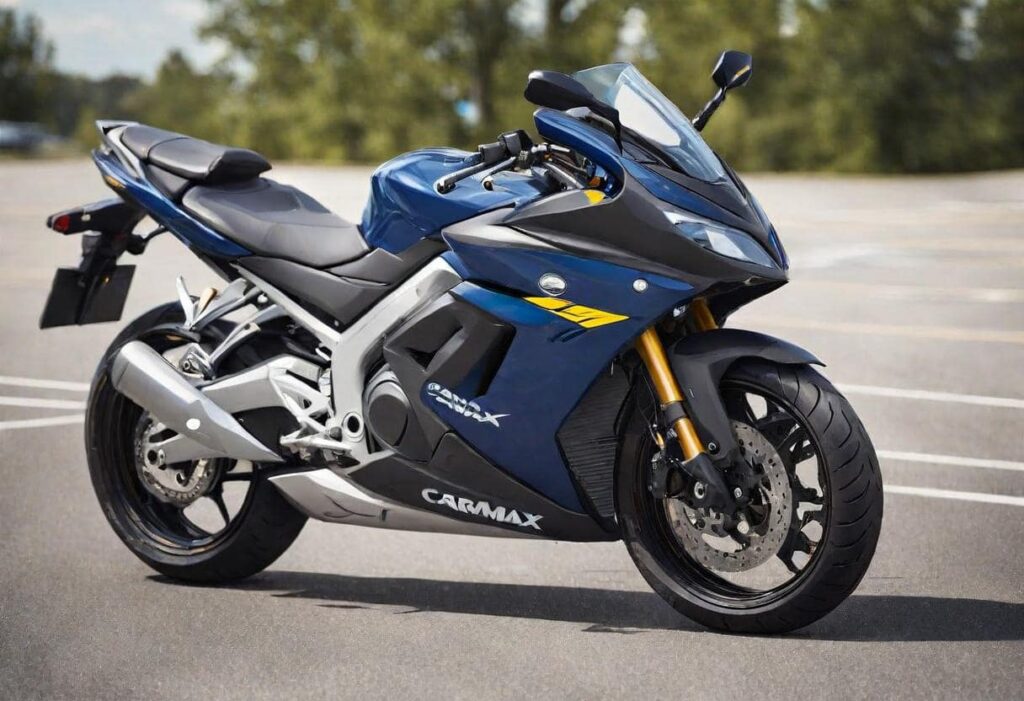
How Much Does a Scooter Weigh?
When considering the weight of different motorcycles, it’s important to look at scooters as well. Although not technically motorcycles, scooters are often handled similarly and can vary significantly in size. While larger than a moped, scooters are still relatively lightweight. Some scooters are as small as 150 pounds, while the heaviest can weigh up to 300 pounds or more. It’s worth a mention that these differences in weight affect how they perform and how easily they can be managed.
How Much Does a Dirt Bike Weigh?
When thinking about how heavy a motorcycle is, dirt bikes are an interesting category to explore. These bikes are specifically designed for rough terrain, which means they are generally lighter than other motorcycles and even some scooters. The variance in size among dirt bikes is significant. Smaller dirt bikes, with engines ranging from 50cc to 100cc, typically weigh between 100 and 200 pounds.
On the other hand, larger dirt bikes built for more intense riding often come with bigger engines and can weigh as much as 300 pounds. The largest of these, known as adventure bikes, are built for long-distance off-road travel and come equipped with heavier engines ranging from 750cc to 1200cc. These adventure bikes can weigh in the neighborhood of 500 pounds, making them the most robust in the dirt bike category.
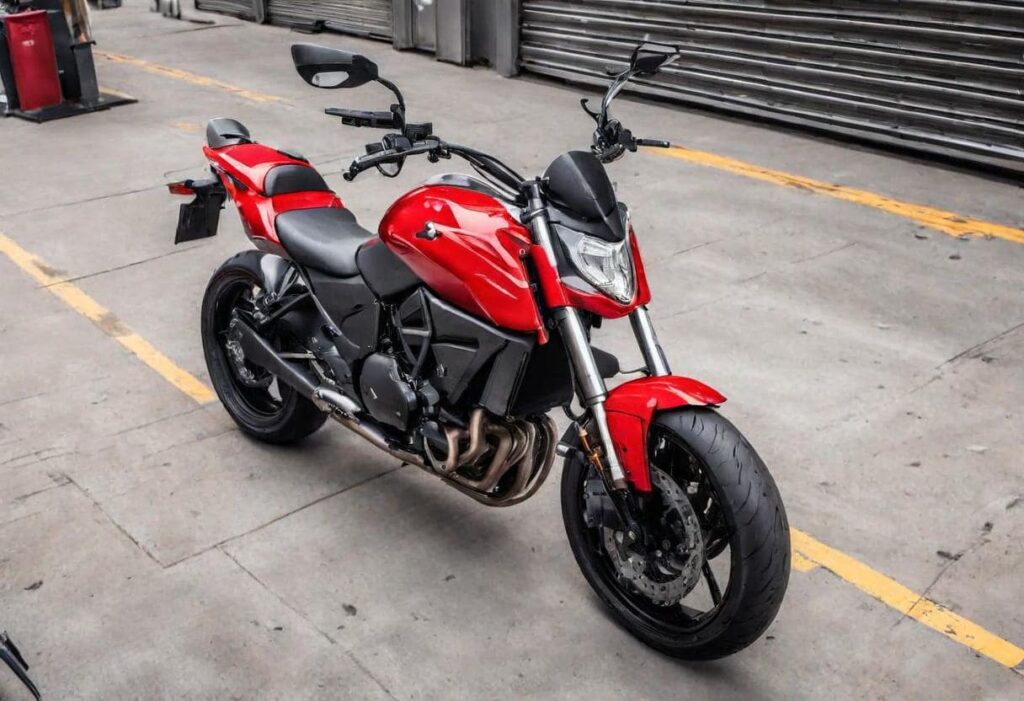
How Much Does a Sport Bike Weigh?
When considering how heavy a motorcycle is, sportbikes are a class that stands out for their focus on speed and maneuverability. Unlike other motorcycles, sportbikes prioritize raw performance over cargo capacity or off-road capability. With powerful motors, beefy brakes, and aerodynamic fairings, they are built to perform at their best on the road. As a result, sportbikes typically weigh more within their cc range. Most fall in the 300 to 500-pound range, making them heavier than other types of bikes in similar engine classes, but that extra weight contributes to their superior performance and efficiency on the road.
How Much Does a Cruiser Weigh?
When discussing how heavy a motorcycle is, cruiser bikes are known for their comfort on long-distance journeys and weekend rides. Unlike sportbikes, cruisers often have fewer fairings and smaller brakes, focusing more on a relaxed riding experience than on performance. Most cruiser bikes fall within the 300 to 500-pound weight range, making them manageable for most riders. However, larger power cruisers like Harley-Davidsons can weigh a bit more due to their enhanced features and bigger engines.
The heaviest cruisers are those designed for long-distance travel and are often called touring bikes. These bikes are equipped with large engines, often over 1,000cc, and come with various perks for travel, such as sound systems, large seat backs, and storage containers. These added features and the need for durability on the road make them considerably heavier, with some models weighing between 800 and 1,000 pounds.
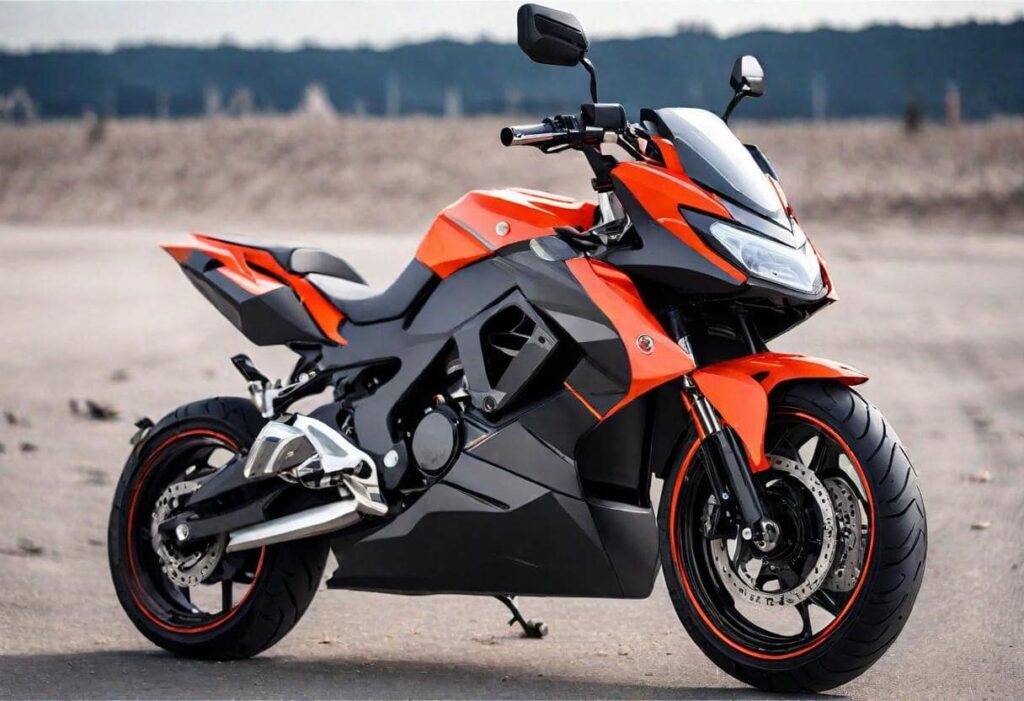
Motorcycle Wet vs. Dry Weight
When discussing how heavy a motorcycle is, you might come across terms like dry weight and wet weight. Dry weight refers to the weight of the motorcycle without any fluids such as oil, coolant, final gear oil, brake fluid, or gas. This weight is essentially the shipping weight of a fully assembled motorcycle and is mainly useful for manufacturers and shipping companies. However, for consumers, dry weight isn’t as relevant because it doesn’t reflect the actual weight when the bike is ready to ride.
On the other hand, wet weight includes all the fluids in the motorcycle. But even here, the difference can be confusing, as manufacturers aren’t always clear about what wet weight actually means. Sometimes it’s like the automobile curb weight, with all fluids and a full tank of gas. Other times, it might mean only a half tank or no gas at all. Despite the lack of a clear standard, wet weight is generally accurate enough for practical purposes when considering how much your motorcycle actually weighs.
How To Lighten The Load
If you’re looking to make your motorcycle lighter, there are several tricks you can try to reduce its weight. A lighter bike is not only easier to handle but also more efficient to transport and offers better fuel efficiency. One simple change is to buy an aftermarket Lithium-ion battery instead of the standard lead-acid batteries that many motorcycles still use. These newer batteries are much less heavier and provide the same power at a fraction of the weight, which can significantly reduce the overall weight of your motorcycle.
Another way to reduce the weight is by upgrading your bike’s parts. For instance, you can replace steel rear sprockets with lighter titanium replacements, which are not only stronger but also help shave off some pounds. Additionally, consider removing any unnecessary components like windscreens, saddlebags, or sissy bars. While these optional attachments are convenient, they add extra weight to your motorcycle. If you’re aiming for the lightest ride possible, you’ll need to decide which of these features you’re willing to sacrifice.
Related: Where are KTM Motorcycles Made?

Things That Add Weight To The Motorcycle
Several major components add significantly to a bike’s weight, including the engine, fasteners, exhaust system, braking system, battery, wheels, and more.
The Engine
When it comes to the weight of a motorcycle, the engine plays a crucial role. The engine is often the largest part of the bike, and it significantly impacts the overall net weight. Bikes with considerable engines tend to weigh more than those with smaller-sized engines. For instance, you’ll find smaller engines on scooters, nude bikes, and dirtbikes, while larger engines are common on choppers, cruisers, and sportbikes. This makes the engine a key element that can make certain bikes feel particularly hefty.
Related: How to Start a Motorcycle Club
Panniers
One significant component that can greatly affect the weight of bikes is the panniers. Exploring bikes often come with panniers as stock, and they are also common on Adventure bikes. Panniers can add a lot of weight, especially if they are made from traditional steel. Some panniers can evaluate up to 10 pounds each, even when empty. When you start adding things like extra gas, oil, a spare headgear, or a chain, the total weight can quickly increase.
The Material Manufacturers Use
The weight of a motorcycle is significantly influenced by the materials used in its construction. In the early days, bikes were made almost entirely out of steel, which is both durable and dependable but also very heavy. This makes a big distinction when comparing old bikes to brand-new models. For instance, an old Café racer built with traditional steel components is much more massive than a modern version that only has a vintage look.
Today, manufacturers often use lightweight materials like plastic and lightweight steel to make bikes lighter and cheaper to create. However, these products can also be less resistant than the heavier materials used in older models. While this change has made motorcycles more accessible and affordable, it also means that they might not be as durable as their predecessors.
The Fairing
One factor that affects the weight of a motorcycle is the fairing. In modern-day motorbikes, the fairing is usually made of plastic, which adds very little weight to the bike. However, older motorcycles often have fairings made from sheet metal, which can significantly increase the weight of the motorcycle. If you’re considering weight reduction for your bike, replacing the sheet metal with plastic fairing can make a noticeable difference.
Ways to Gauge Weight.
When determining how heavy a motorcycle is, the mass of the bike is gauged using different weights: dry, wet, and gross vehicle rating (GVWR). The GVWR represents the maximum complete weight the bike can safely handle, while dry and wet weights are not standard measurements and vary based on different factors.
Gross Lorry Weight Score.
When discussing the weight of a motorcycle, the Gross Lorry Weight Score (GVWR) is an important factor to consider. The GVWR represents the maximum safe mass that the bike can handle, as specified by the manufacturer. This includes the mass of the motorcycle itself and everything it carries. The details of the GVWR are usually found on the VIN Plate of the bike. The key difference between the damp weight and the GVWR is how much the bike can safely support, including the rider, passenger, fuel, cargo, and equipment.
A bike with a greater difference between these scores can carry more additional pounds like extra gas and spare parts. However, it’s crucial to know this information because if you and your passenger are too heavy for the motorcycle and you add an extra load, it could become unsafe to ride.
Related: What to Wear Bike Ride
Dry.
When considering the dry weight of a motorcycle, it’s important to understand that this is not a standardized dimension. The number can vary from one producer or manufacturer to another, leading to incongruities between what a brand reports and what is published by media outlets and the press. This is often due to different testing techniques. For example, some producers exclude only the fuel, while others may also leave out brake fluid, coolant, and engine oil.
These differences mean that the dry weight should be viewed as an informative detail rather than an absolute figure. There are no conventional means of testing that are universally applied. Additionally, some brands include the battery in the dry dimension, while certain media outlets might exclude it. This inconsistency makes it crucial to consider these factors when comparing the dry weight of different motorcycles.
Damp.
When considering the wet weight of a motorcycle, it includes more than just the basic structure. Wet weight takes into account essential fluids like engine oil, coolant, fuel, battery, and brake fluid. However, like dry weight, there’s no standardized way to test this, which can lead to variations. In the EU, according to Council Instruction 93/93/EEC, wet weight is defined as the mass of the bike in running order, including tools, device settings, windscreen, and about 90% of the gas capacity. Due to disparities in measurements, suppliers often don’t publish these figures, leaving media outlets and the press to provide their own.
Conclusion
For riders, it’s essential to understand the weight of a motorcycle when deciding on a purchase. The weight of a bike can vary greatly depending on the type and modifications. Having a general range in mind can help guide your decision-making process, whether you’re buying a new bike or modifying one to suit your needs.






